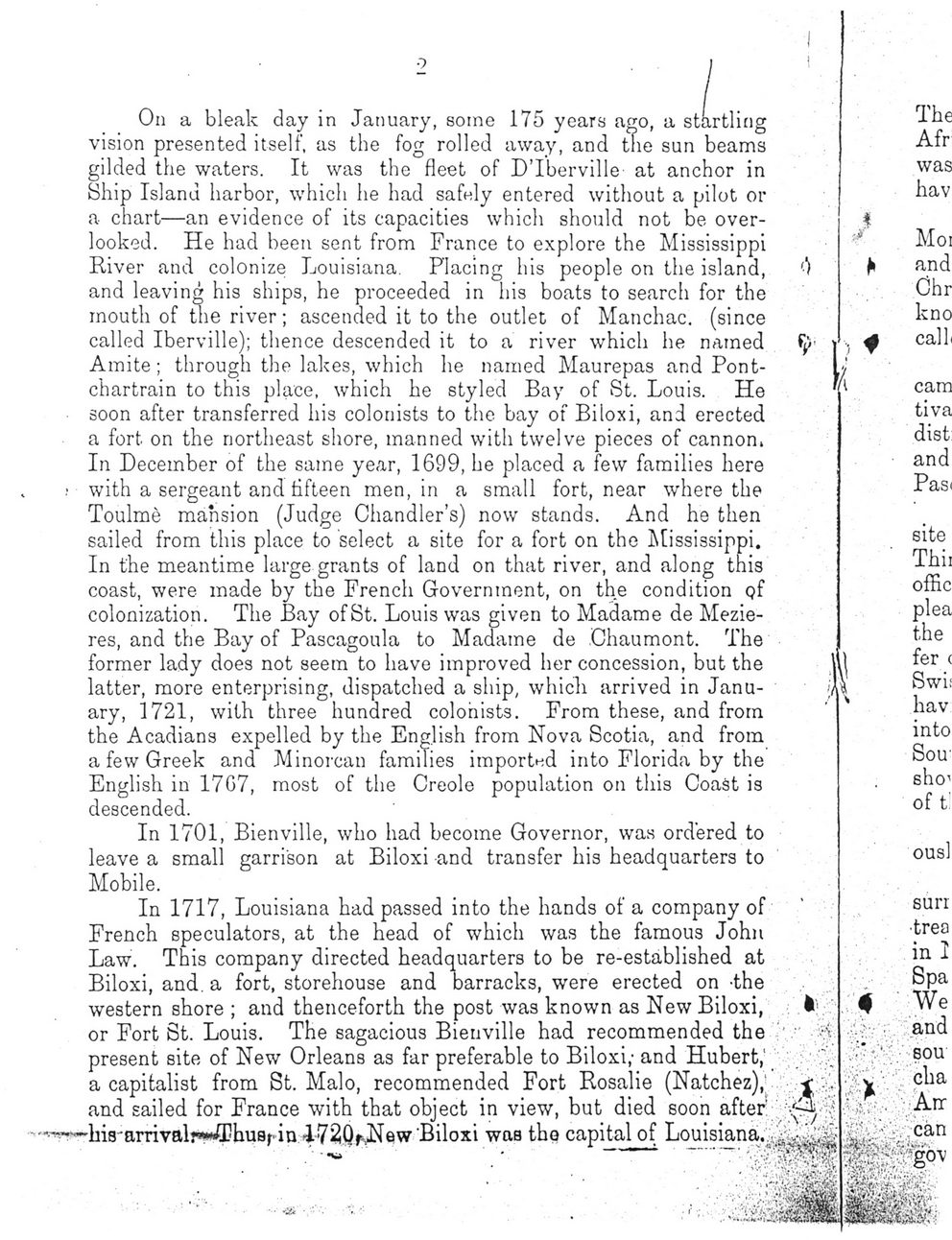This text was obtained via automated optical character recognition.
It has not been edited and may therefore contain several errors.
On a bleak day in January, some 175 years ago, a startling vision presented itself, as the fog rolled away, and the sun beams gilded the waters. It was the fleet of D?Iberville at anchor in Ship Island harbor, which he had safely entered without a pilot or a chart?an evidence of its capacities which should not be overlooked. He had been sent from France to explore the Mississippi River and colonize Louisiana. Placing his people on the island, and leaving his ships, he proceeded in his boats to search for the mouth of the river; ascended it to the outlet of Manchac. (since called Iberville); thence descended it to a river which he named Amite; through the lakes, which he named Maurepas and Pont-chartrain to this place, which he styled Bay of St. Louis. He soon after transferred his colonists to the bay of Biloxi, and erected a fort on the northeast shore, manned with twelve pieces of cannon. In December of the same year, 1699, he placed a few families here ; with a sergeant and fifteen men, in a small fort, near where the Toulme mansion (Judge Chandler?s) now stands. And he then sailed from this place to select a site for a fort on the Mississippi. In the meantime large grants of land on that river, and along this coast, were made by the French Government, on the condition pf colonization. The Bay of St. Louis was given to Madame de Mezie-res, and the Bay of Pascagoula to Madame de Chaumont. The former lady does not seem to have improved her concession, but the latter, more enterprising, dispatched a ship, which arrived in January, 1721, with three hundred colonists. From these, and from the Acadians expelled by the English from Nova Scotia, and from a few Greek and Minorcan families imported into Florida by the English in 1707, most of the Creole population on this Coast is descended. In 1701, Bienville, who had become Governor, was ordered to leave a small garrison at Biloxi and transfer his headquarters to Mobile. In 1717, Louisiana had passed into the hands of a company of French speculators, at the head of which was the famous John Law. This company directed headquarters to be re-established at Biloxi, and. a fort, storehouse and Joarracks, were erected on -the western shore ; and thenceforth the post was known as New Biloxi, or Fort St. Louis. The sagacious Bienville had recommended the present site of New Orleans as far preferable to Biloxi,- and Hubert,' a capitalist from St. Malo, recommended Fort Rosalie (Natchez),1 and sailed for France with that object in view, but died soon after; ^his'arriyalrw<fCliusf'in 4.7^0r-sNew Biloxi was the capital of Louisiana.:.

Claiborne, J.F.H Claiborne-J.F.H-073